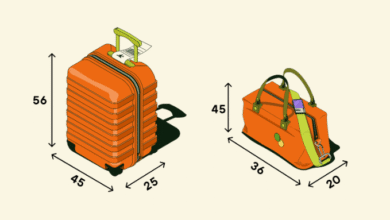Ableton Live: Complete Guide for Beginners and Music Producers
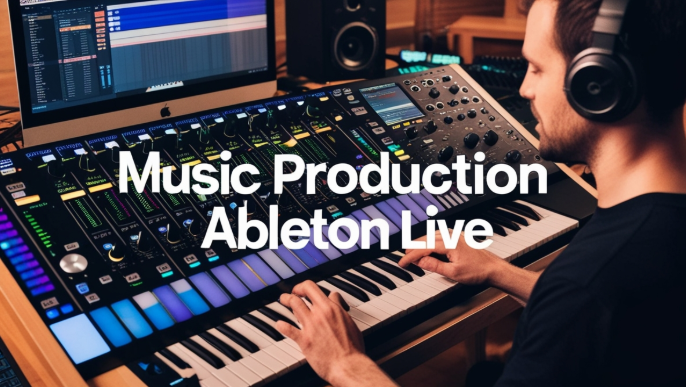
Music production today is more exciting than ever, thanks to digital audio workstations (DAWs). One of the most popular and powerful DAWs is Ableton Live. Whether you are a beginner or a professional producer, Ableton Live gives you the tools to create, record, and perform music in ways that are smooth and inspiring.
In this article, we will explore everything you need to know about Ableton Live. From its history and features to tips for beginners and why professionals love it, this guide will help you understand why it is a favorite in the music industry.
What is Ableton Live
Ableton Live is a digital audio workstation (DAW) designed for music production, recording, mixing, and live performance. Unlike some other DAWs, Ableton Live is known for its unique workflow and performance-friendly features. It was first released in 2001 by Ableton, a company based in Berlin, Germany.
Since then, it has become a favorite among electronic music producers, DJs, and performers because of its session view and clip-based workflow, which allow users to experiment with music in real time. Unlike traditional DAWs that focus on linear timelines, Ableton Live gives you a flexible way to build and rearrange ideas quickly.
Versions of Ableton Live
Ableton Live comes in different versions to suit various needs and budgets:
- Ableton Live Intro – A more affordable entry-level version with limited tracks and features.
- Ableton Live Standard – Includes more tracks, instruments, and effects, suitable for most producers.
- Ableton Live Suite – The most complete version with all instruments, sounds, and effects. Ideal for professionals who want the full range of tools.
Each version has its strengths, but even the Intro version gives beginners enough power to start creating music.
Key Features of Ableton Live
Ableton Live is filled with features that make it stand out from other DAWs:
1. Session View and Arrangement View
- Session View lets you play with clips, loops, and samples in a grid format. This makes experimenting with ideas fun and easy.
- Arrangement View is more traditional, letting you lay out your song on a timeline.
Switching between these two views is smooth and allows both creativity and structure.
2. Built-in Instruments and Effects
Ableton Live comes with a wide range of instruments like synthesizers, drum machines, and samplers. It also includes effects such as reverb, delay, EQ, and compressors to shape your sound.
3. Warping and Time-Stretching
Ableton Live’s Warping feature is one of its most powerful tools. It allows you to change the tempo of a song without affecting pitch, or adjust pitch without changing tempo. This is especially useful for DJs and remixers.
4. Max for Live
In the Suite version, you get Max for Live, which lets you build custom instruments and effects or download community-created ones. This adds endless possibilities.
5. MIDI and Audio Recording
Ableton Live makes it easy to record MIDI from a keyboard or controller and audio from microphones or instruments. You can edit, loop, and rearrange everything quickly.
Why Producers Love Ableton Live
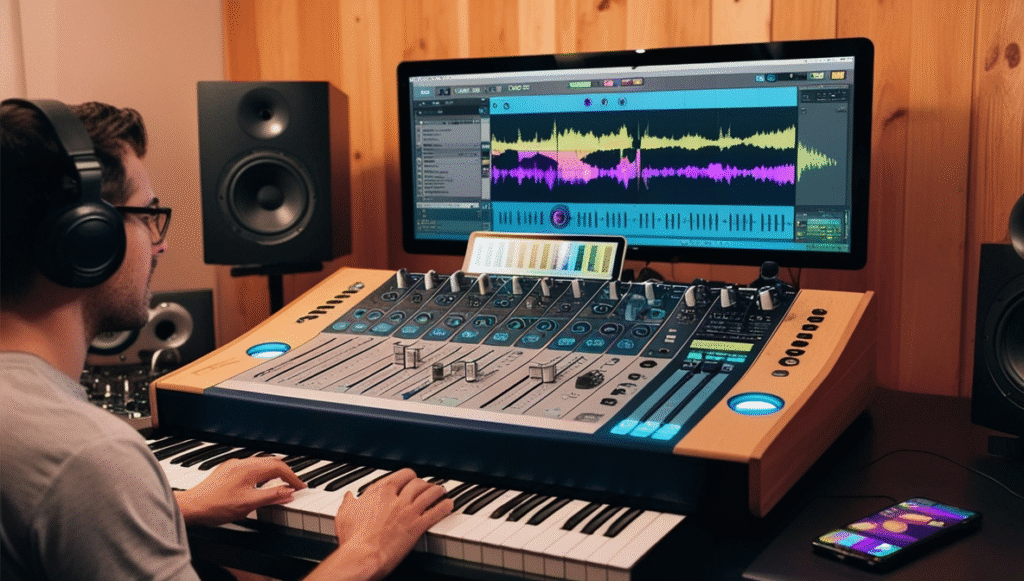
Producers and DJs choose Ableton Live for many reasons:
- Speed of workflow: It allows you to test ideas quickly.
- Flexibility: You can use it for producing, DJing, or live performances.
- Creative freedom: The Session View encourages experimentation.
- Integration with hardware: Works perfectly with MIDI controllers like Ableton Push.
- Stable and reliable: Ableton Live is trusted in live performance because of its stability.
Ableton Live vs Other DAWs
There are many DAWs like FL Studio, Logic Pro, and Pro Tools. Here’s how Ableton Live compares:
- FL Studio: Great for beat-making and beginners, but Ableton Live is stronger for live performance.
- Logic Pro: Excellent for recording and mixing, but only available on Mac. Ableton works on both Windows and Mac.
- Pro Tools: Industry standard for studios, but more expensive and less creative for electronic music.
Ableton Live sits in the middle – it’s professional but also beginner-friendly.
Ableton Push: The Perfect Companion
One reason Ableton Live is unique is the Ableton Push controller. Push is a hardware instrument designed specifically for Live. It allows you to:
- Play melodies, beats, and chords directly.
- Control session view clips.
- Step-sequence drums.
- Adjust effects and instruments without touching the mouse.
Push turns Ableton Live into a hands-on music instrument.
Tips for Beginners in Ableton Live
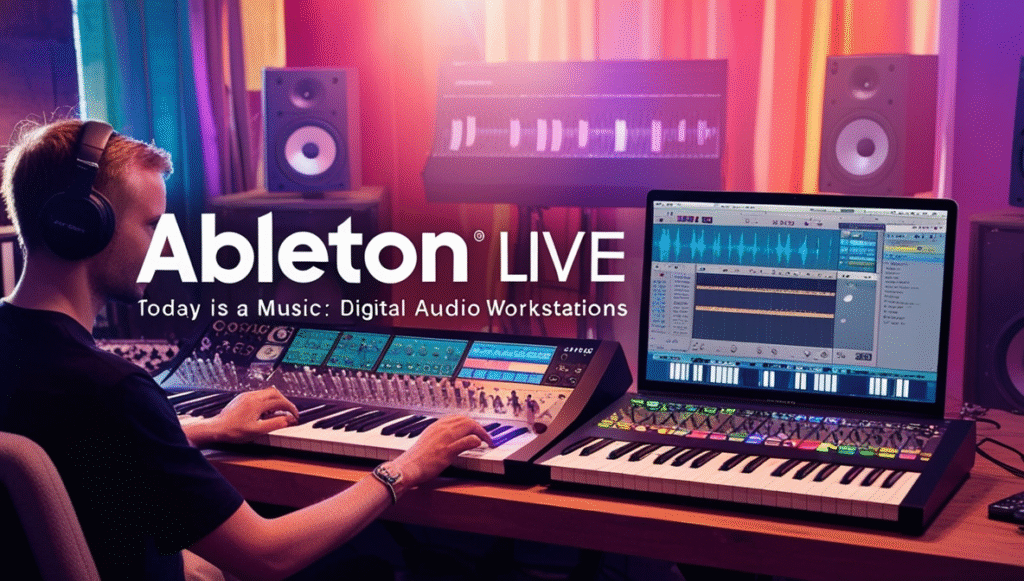
If you are just starting with Ableton Live, here are some tips to help you:
- Learn keyboard shortcuts – It will save time while producing.
- Experiment with Session View – Try dropping loops and samples to get used to the workflow.
- Use templates – Create a default setup with your favorite instruments and effects.
- Start with stock instruments – Don’t worry about third-party plugins until you master the basics.
- Watch tutorials – The Ableton website and YouTube have many free lessons.
Ableton Live for DJs
Ableton Live is not only for music producers but also for DJs. Many DJs use it instead of traditional decks because it:
- Allows remixing on the fly.
- Lets you create smooth transitions between tracks.
- Supports effects automation for more creativity.
- Offers MIDI mapping so you can use any controller.
Ableton Live for Bands and Performers
Live is also widely used by bands and stage performers. Artists like Coldplay and Imogen Heap use it in their shows. Its ability to trigger samples, backtracks, and visuals makes it a powerful performance tool.
Ableton Live Community and Learning
Another reason Ableton Live is so popular is its community. Thousands of producers share presets, templates, and advice online. There are also official Ableton Certified Training Centers where you can learn directly from professionals.
Future of Ableton Live
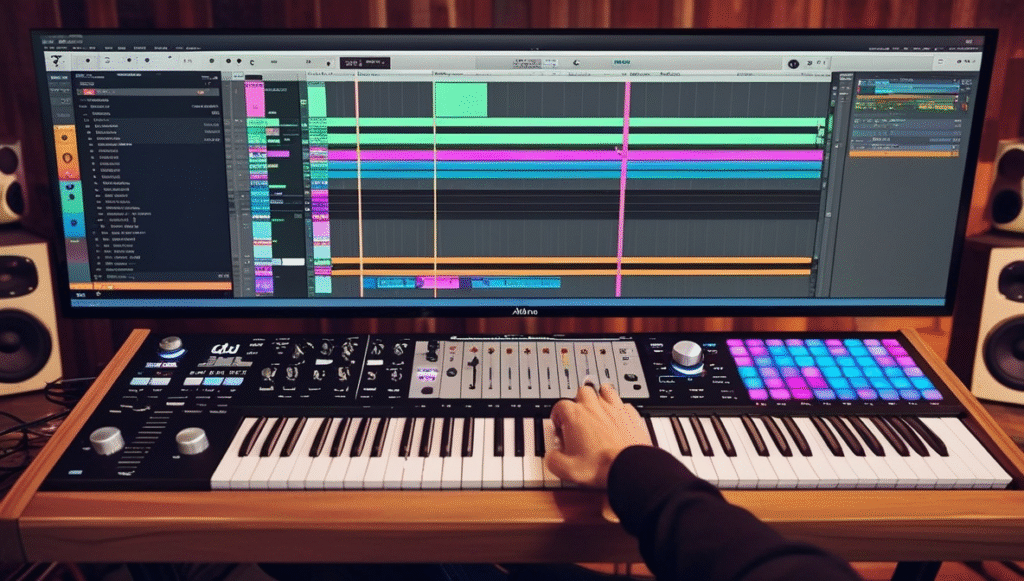
With every update, Ableton adds new features to keep up with music technology. As AI, machine learning, and advanced plugins become part of music production, we can expect Ableton Live to integrate these tools while keeping its user-friendly design.
Conclusion
Ableton Live is more than just a DAW—it’s a complete music creation and performance environment. From its flexible Session View to its powerful built-in instruments, it gives both beginners and professionals the freedom to make music in a creative way.
Whether you want to produce tracks, DJ, or perform live, Ableton Live is one of the best tools available. Its community, features, and reliability make it a long-lasting choice for anyone serious about music.
FAQs
Q1: Is Ableton Live good for beginners?
Yes, Ableton Live is beginner-friendly. The Intro version is affordable and has everything you need to start making music.
Q2: Do I need Ableton Push to use Ableton Live?
No, Ableton Push is optional. It makes the workflow easier, but you can use Ableton Live with just a computer and mouse.
Q3: Can I use Ableton Live for free?
Ableton offers a 90-day free trial of the Suite version. After that, you need to purchase a license.
Q4: Which version of Ableton Live should I buy?
- Intro if you are just starting.
- Standard if you want more instruments and tracks.
- Suite if you are a professional and want the full package.
Q5: Is Ableton Live good for recording vocals and instruments?
Yes, it has high-quality recording tools and effects for vocals, guitars, and other instruments.

